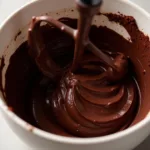You’ve meticulously separated your cake batter, adding a dash of vibrant green to one bowl and a touch of sunshine yellow to the other. As you stir, a thought pops into your head: will the green cake taste different from the yellow one? In other words, Does Food Coloring Have A Taste? Let’s dive into the colorful world of food coloring and uncover the answer.
The Flavor Factor: Does Food Coloring Affect Taste?
The short answer is: generally, no. Most commercially available food colorings have a neutral taste, especially when used in small amounts for baking and cooking. While some people might perceive a slight aftertaste, especially with certain brands or concentrated formulas, it’s usually negligible and doesn’t significantly impact the overall flavor of your dish.
Think about it – a drop of red food coloring won’t make your vanilla frosting taste like strawberries. The amount used is simply too small to register on your taste buds in a meaningful way.
Taste vs. Flavor: Why We Might Associate Color With Taste
While food coloring itself might not have a strong taste, it can influence our perception of flavor. Our brains are wired to associate colors with specific tastes. For example, the bright red of strawberries signals our brain to expect a sweet, slightly tart flavor. When we see a red-colored food, our brains might anticipate a similar taste experience.
This interplay between color and flavor perception is why food manufacturers often use coloring to enhance the appeal of their products. A brighter, more vibrant color can make food seem more appetizing and flavorful, even if the taste itself hasn’t changed significantly.
Types of Food Coloring and Potential Taste Impacts
Food colorings come in various forms, from liquid drops to gels and powders. Most are synthetically produced, while some are derived from natural sources like fruits, vegetables, and spices.
- Liquid Food Coloring: The most common type, often found in supermarkets. They generally have a neutral taste when used in standard amounts.
- Gel Food Coloring: More concentrated, allowing for vibrant colors with fewer drops. They might have a slightly sweet taste due to added ingredients like glycerin.
- Powdered Food Coloring: Highly concentrated, often used for professional baking. They typically have a neutral taste but can be slightly bitter if used in excess.
- Natural Food Coloring: Derived from plant sources, they often have their own subtle flavors. For example, beet juice (red) can add a slightly earthy taste, while turmeric (yellow) has a distinctive warm flavor.
When using natural food colorings, it’s crucial to consider their potential flavor impact on your recipe. You might need to adjust other ingredients to achieve the desired taste balance.
 Ingredients for natural food coloring
Ingredients for natural food coloring
Tips for Using Food Coloring Without Affecting Taste
- Start Small: Begin with a small amount of food coloring and gradually add more until you reach the desired shade. This way, you can avoid using too much and potentially affecting the taste.
- Choose Quality Brands: Opt for reputable food coloring brands known for their neutral taste and high quality.
- Consider the Base Flavor: When using natural food coloring, be mindful of how their inherent flavors might interact with your recipe.
- Taste Test: Always taste test your batter or frosting before adding more food coloring, especially if you’re using a new brand or a large amount.
Conclusion
While food coloring itself generally doesn’t have a strong taste, especially in the small amounts used in everyday cooking, it can subtly influence our perception of flavor due to the powerful connection between color and taste in our brains. By understanding how to use food coloring effectively, you can create visually stunning and delicious treats without compromising on flavor. So go ahead, add a splash of color to your culinary creations and let your creativity shine!
FAQs
1. Can food coloring stain my teeth?
Yes, some food colorings, especially red and blue, can temporarily stain teeth. Brushing your teeth after consuming brightly colored foods can help minimize staining.
2. Is food coloring safe to consume?
Food colorings approved by regulatory bodies are generally safe for consumption in moderate amounts. However, some individuals might have sensitivities or allergies to certain dyes.
3. Can I use food coloring to dye my hair?
No, food coloring isn’t formulated for hair dyeing and won’t produce the desired results. It can also stain your scalp and skin.
4. How long does food coloring last?
Unopened food coloring can last for several years. Once opened, it’s best to store it in a cool, dark place and check for any changes in color or odor before using.
5. Can I mix different food colorings to create new shades?
Yes, you can mix primary food colors (red, yellow, blue) to create a wide range of hues.
For more insights into food coloring and its uses, check out our articles on how to make black icing with black food coloring, can food coloring go bad, and how long does wilton icing color last.
Have other questions about food coloring or need help finding the perfect shade for your next culinary masterpiece? Contact our team at Color Box Hanoi! We’re here to help you unleash your creativity in the kitchen. Call us at 0373298888, email us at [email protected], or visit our showroom at 86 Cầu Giấy, Hà Nội. Our friendly and knowledgeable staff are available 24/7 to assist you.

